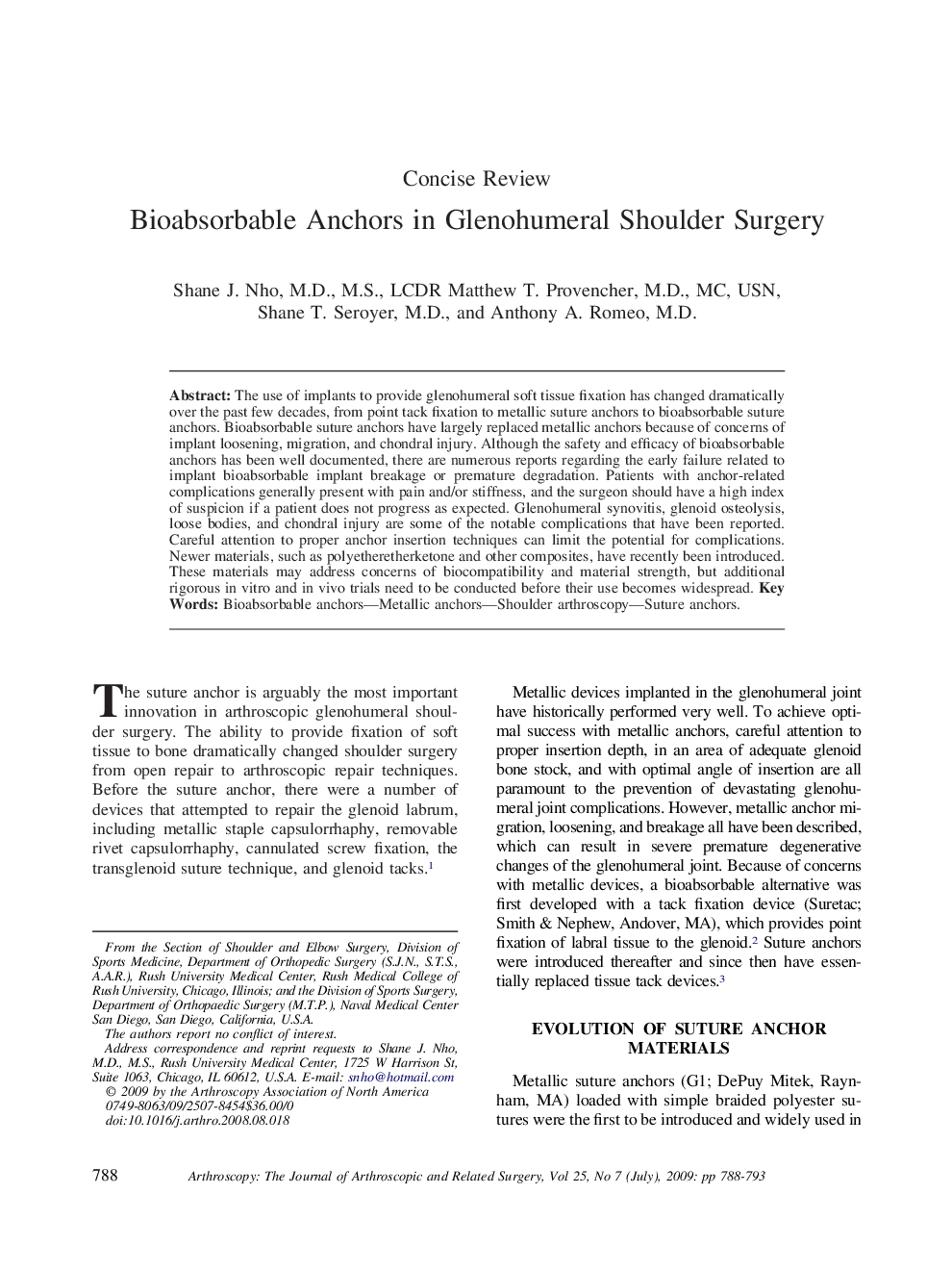| Article ID | Journal | Published Year | Pages | File Type |
|---|---|---|---|---|
| 4045451 | Arthroscopy: The Journal of Arthroscopic & Related Surgery | 2009 | 6 Pages |
The use of implants to provide glenohumeral soft tissue fixation has changed dramatically over the past few decades, from point tack fixation to metallic suture anchors to bioabsorbable suture anchors. Bioabsorbable suture anchors have largely replaced metallic anchors because of concerns of implant loosening, migration, and chondral injury. Although the safety and efficacy of bioabsorbable anchors has been well documented, there are numerous reports regarding the early failure related to implant bioabsorbable implant breakage or premature degradation. Patients with anchor-related complications generally present with pain and/or stiffness, and the surgeon should have a high index of suspicion if a patient does not progress as expected. Glenohumeral synovitis, glenoid osteolysis, loose bodies, and chondral injury are some of the notable complications that have been reported. Careful attention to proper anchor insertion techniques can limit the potential for complications. Newer materials, such as polyetheretherketone and other composites, have recently been introduced. These materials may address concerns of biocompatibility and material strength, but additional rigorous in vitro and in vivo trials need to be conducted before their use becomes widespread.
